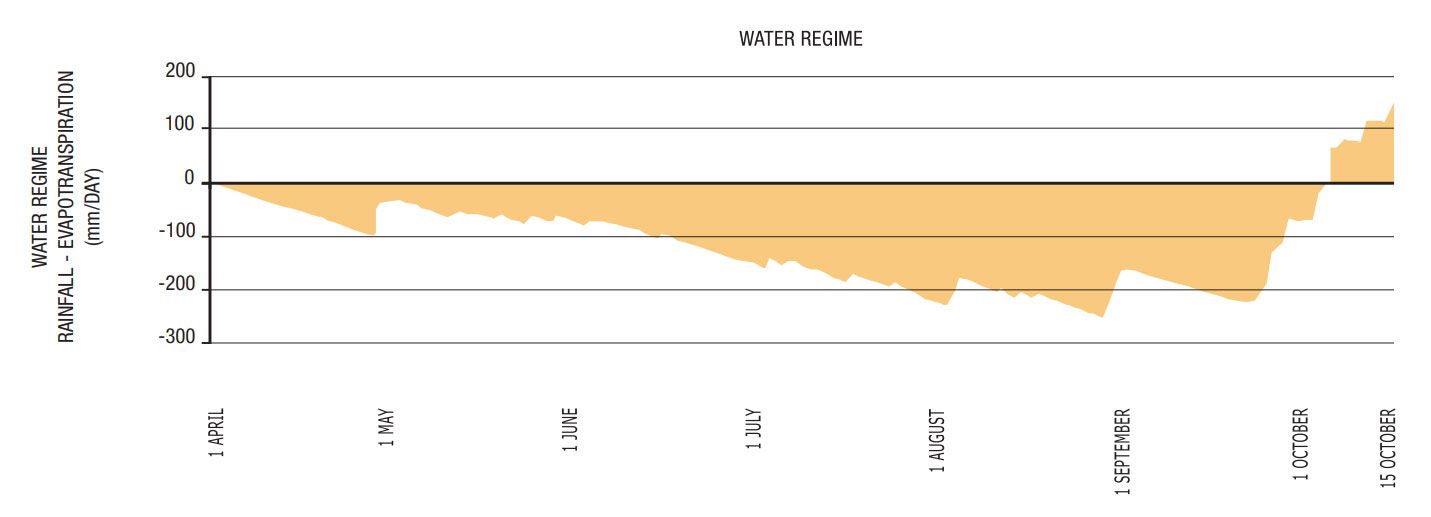VINTAGES
VINTAGE 2021
2021 GROWING YEAR
Severe winter temperatures, which lasted through all of February, delayed sap circulation in the vines and thus budbreak by some 7-10 days over recent seasons. This time period actually had one positive effect, in that it allowed us to comfortably complete winter pruning and vineyard structures repair.
WEATHER CONDITIONS
Late freezes on 6-7-8 April struck the still-emerging shoots, some bearing just one small leaf, and other grape varieties with buds that had just begun to swell. It was an unusual freeze in that it was not the classic thermal inversion but a convention current, that is, masses of cold air moving around. Our wine machines, which mix strata of cold air with warmer layers, had no discernible effect on this particular phenomenon, since the cold strata higher up were the same temperature as those on the ground. On the other hand, low groundwater storage led to greater sugar concentrations in the sap (which, fortunately, also meant a lower freezing point for the shoots) and delayed phenological progression, so that actual damages were limited.
A fairly dry April was followed a very rainy May, and high humidity and very wet conditions brought widespread downy mildew (peronospora) attacks in the vineyards. Damage, particularly evident on the clusters, was very significant, especially in certain vineyards, requiring laborious manual removal of infected leaves and clusters in order to reduce further spore inoculation. Good weather and high temperatures returned in mid-June, encouraging an overall physiological improvement in the vines, but a cold, rainy May delayed flowering, particularly in the early-ripening varieties, by 10-13 days. Flowering thus began on 10 June, with propitious weather conditions, and concluded in 8 days with excellent fruit-set. June ushered in progressively warmer days, without any heat spells, while summer experienced alternating stretches of hot and cooler conditions, in particular as ripeness, and therefore harvest, approached. Rainfall was scarce and below average, which caused considerable stress to the vines, so that we initiated precision drip irrigation, depending on individual conditions in the various crus. The favourable environmental status brought rapid berry growth, so much so that the various grape varieties, contrary to their usual ripening in successive stages, started ripening simultaneously. Veraison began appearing during the second week of August, some 10 days behind the recent norm. The 2021 harvest will go into the books as a late one, with picking of the early-ripeners starting late in the first third of September, much like the harvests we saw in the 1980s. The salient characteristics of this vintage are outstanding sugar concentrations concomitant with high acidities and low pH, the latter due to low potassium content in the soils, the result of water stress. These constituent qualities, combined with technical tastings of the wines, indicate wines with a marked inclination towards taut, tangy acidities, firm structure, and a high potential for longevity. In this, they are similar to the wines of 2019, 2016, and 2009.






